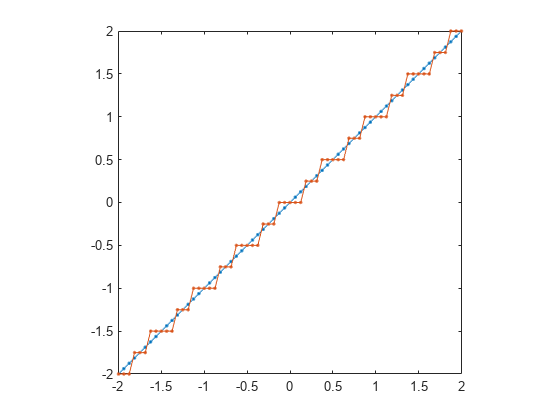round
Round fi object toward nearest integer or round input data using
quantizer object
Description
y = round(a)fi object a to the nearest integer. In the case of a
tie, round rounds values to the nearest integer with greater absolute
value. The rounded value is returned in fi object
y.
Examples
Input Arguments
Algorithms
yandahave the samefimathobject andDataTypeproperty.When the
DataTypeproperty ofaissingle,double, orboolean, thenumerictypeofyis the same as that ofa.When the fraction length of
ais zero or negative,ais already an integer, and thenumerictypeofyis the same as that ofa.When the fraction length of
ais positive, the fraction length ofyis0, its sign is the same as that ofa, and its word length is the difference between the word length and the fraction length ofa, plus one bit. Ifais signed, then the minimum word length ofyis2. Ifais unsigned, then the minimum word length ofyis1.
Extended Capabilities
Version History
Introduced before R2006a
